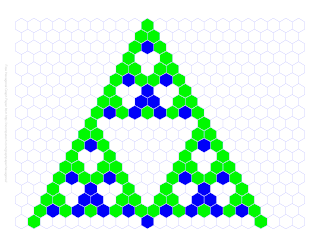Modular arithmetic
Last week we came back to our problem from the previous two sessions about trying to hit all the points on a circle of n points. We made some progress on it, and I talked about the concept of relatively prime numbers (having no factors in common except 1), but I was sensing some restlessness, so this week we moved on to something different.
Logic puzzles
We started working on some simple logic problems, where you have, for example, three people with three different occupations, but you don't know which person has which occupation. Using the clues, you eliminate certain combinations until only one possibility remains.
The Centre for Innovation in Mathematics Teaching gives some examples of these. I used examples from this book.
We did several variations, where the correspondences were still small; just 3 or 4 things to match, but where the clues were more and more tricky.
For example, in one problem matching A, B, and C to X, Y, an Z, it was revealed that A was older than X. We talked about how this clue looks like it is giving only irrelevant information, but the inference you have to make is that if A is older than X, then A can't be X.
It was a lot of fun, and we will do some harder ones like this next week.

